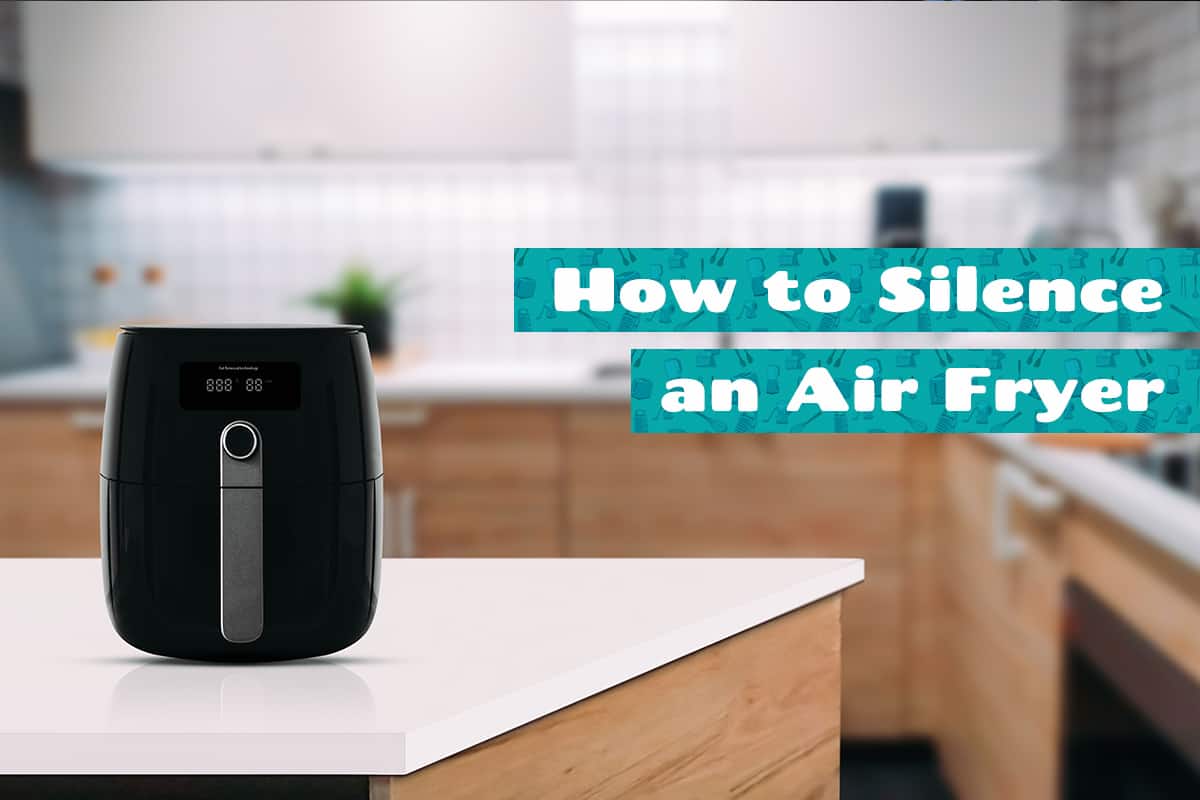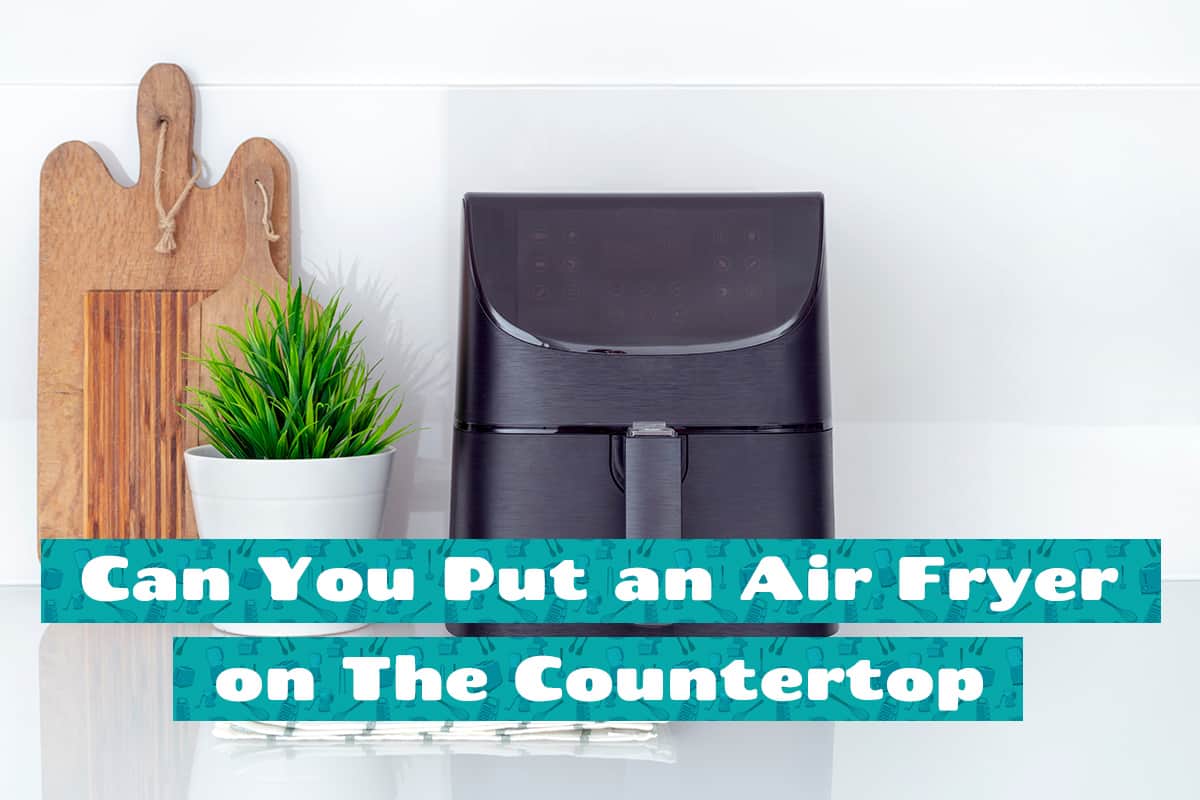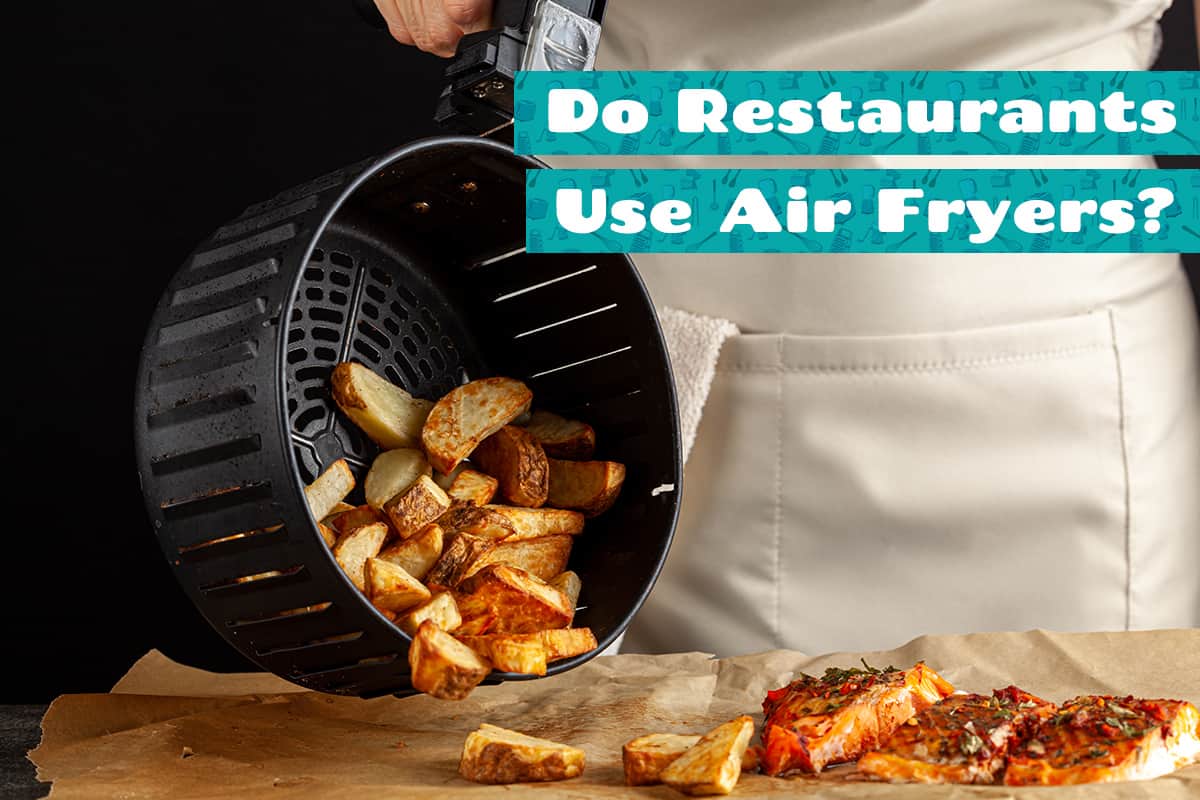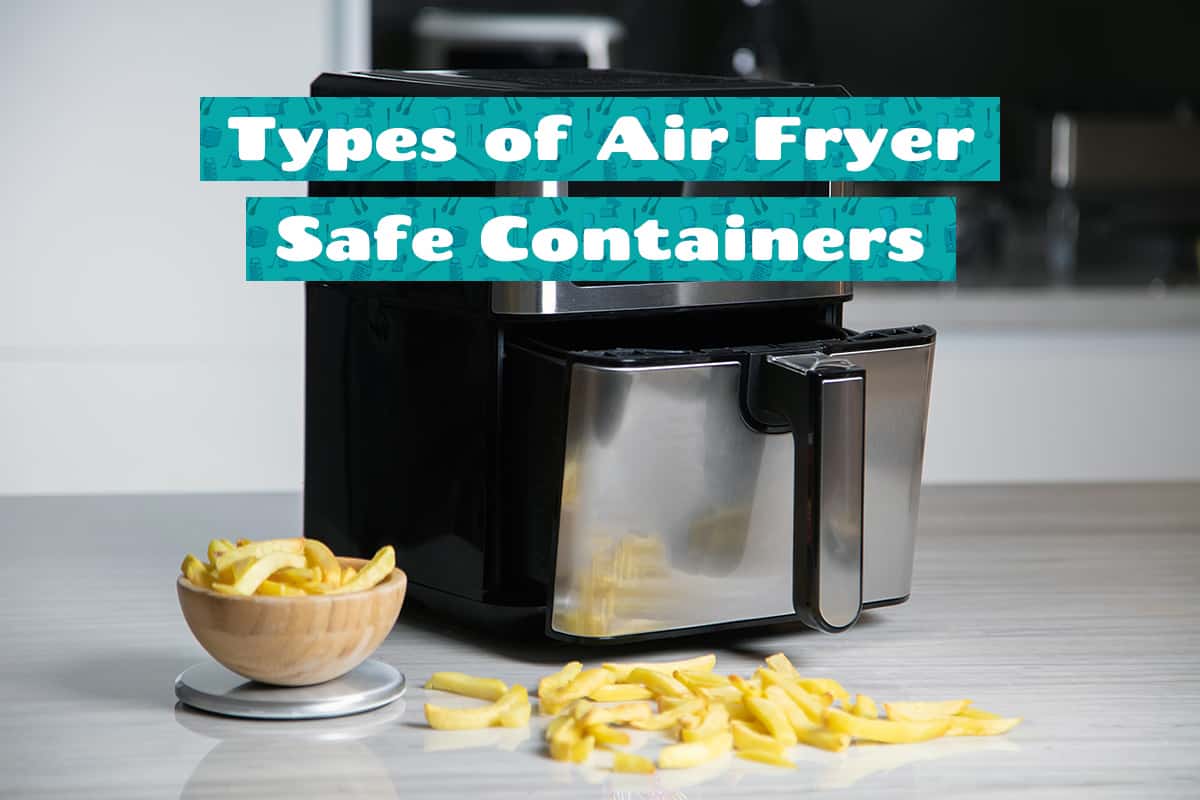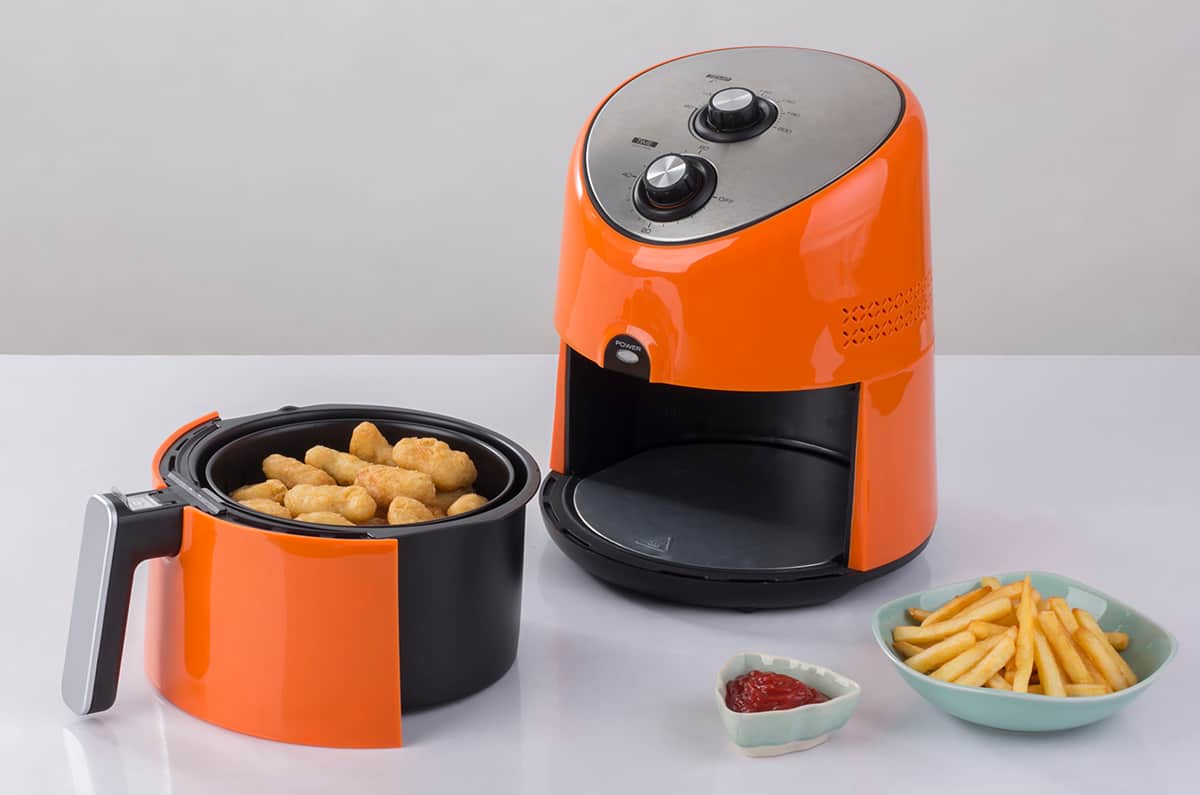When it comes to baking, you have a wide selection of bakeware to choose from. But what about air-frying. Can materials like, say, silicone go in an air fryer?
It’s safe to put silicone molds in an air fryer as long as they are oven-safe. Silicone molds are great for making all sorts of desserts in an air fryer, and they have the added benefit of being naturally nonstick.
In this guide, I’ll break down the various reasons why you should use a silicone mold in an air fryer, how to safely use a silicone mold in an air fryer, and how silicone baking dishes compare to other bakeware materials.
Can You Put Silicone Molds in an Air Fryer?
The short and sweet answer to this question is, yes, you can put silicone molds in an air fryer as long as it is oven-safe. You don’t have to worry about your air fryer melting the silicone or warping it in any way. To understand how an air fryer will affect silicone, you should know how this appliance works.
In all important respects, air fryers are miniature convection ovens. They cook food using the principle of circulated heated air. As the heating element raises the temperature inside the food basket, a fan moves the air around to cook your food from all angles. In addition, air fryers do not emit microwave radiation or produce an open flame.
So, knowing how an air fryer works, you should have a good idea of why silicone is safe to use in the device.
Benefits of Silicone
![]()
Here, I’ll explain the various reasons why you should use silicone molds, mats, or liners in your air fryer.
Durable
Unlike other bakeware materials, silicone will return to its original shape. It will take a ton of pressure or heat to warp silicone, and luckily, air fryers are not designed to emit enough heat to do so. In addition, dropping a silicone mold will not result in a million fragments. Instead, it will bounce and return to normal.
Easy to clean
One of the greatest benefits of silicone bakeware is that they are naturally nonstick. So, sticky sauces and food particles will not adhere to the sides and base of the mold. Also, you can stick your silicone baking molds in a dishwasher, and it will be completely clean and ready to use immediately afterward.
Cool to the touch
Only minutes after your air fryer’s timer expires, the silicone mold will be cold enough to grab with your bare hands. Silicone is an insulator, not a conductor, so it will have to be exposed to tremendous levels of heat before it becomes too unbearable to handle. However, that doesn’t mean you should grab the mold immediately after the air fryer’s timer goes off!
Resistance to extreme temperatures
Silicone bakeware is designed to withstand oven and air fryer heat. You can transfer it from your air fryer to your refrigerator without worrying about how the sudden temperature change will affect its structure.
How to Use Silicone Molds in an Air Fryer
Using silicone in an air fryer is pretty straightforward. All you have to do is fill the mold with your food (no preheating required), transfer it to a preheated air fryer food pan, and wait until the air fryer’s timer expires before pulling it out. However, just because the silicone is cool to the touch doesn’t mean the food won’t burn the roof of your mouth!
However, there are a few tips I’d like to give you about how to use your silicone mold safely in an air fryer.
Do not stack silicone molds
Stacking food in an air fryer involves the use of a rack accessory. The rack will lift the second layer of food a couple of inches above the bottom layer, allowing you to cook twice as much food at once. However, if you use silicone molds, you should not do this.
Although silicone can withstand tremendous amounts of heat, it will melt if it gets too close to the air fryer’s heating element. So, remove the food rack before inserting your silicone mold inside the food basket.
Find a silicone mold that is roughly the same size as the food basket
Silicone molds do not have rigid sides. As such, the walls might droop slightly if you fill it with food. When this happens, your food might spill out of the mold and end up all over the food basket’s base.
In order to stop this from happening, you should find a silicone mold that is roughly the same width and length as the food basket. That way, the sides will have something to rest against and reduce the likelihood of spillage.
Lightly grease the mold before adding the batter
I know—silicone is supposed to be naturally nonstick. However, if you use irregularly shaped molds, you might find it a bit challenging to unmold your baked goods. You can simplify the unmolding process by lightly greasing the inner walls and base of the individual molds. As a side note, if you’re going to spray the mold with Pam, make sure you do so before putting the mold inside the food basket. After all, Teflon and nonstick spray don’t mix very well.
Do not use sharp utensils to remove the silicone mold from your air fryer
Sharp utensils like knives and even the tines of a fork can damage silicone. So, use hot pads, oven mitts, or a spatula to carefully remove the silicone mold from the air fryer food pan.
Silicone vs. Other Bakeware Materials
![]()
So far, I’ve provided arguments for why you should use silicone. Now, let’s see how silicone compares to metal and ceramic.
Silicone vs. Metal
- Metals like aluminum and stainless steel are excellent conductors. They heat up evenly and rapidly, so they will crisp the edges of baked food. This is nearly impossible to do with silicone molds since the material is an insulator.
- Aluminum and stainless steel are not as durable as silicone. If you drop an aluminum pan on the ground, it may warp in shape and not heat up evenly in an air fryer. Silicone can withstand drops from dozens of feet high without ruining its structure. However, cast-iron bakeware is more durable than the other types of metal but not in the same way as silicone.
- Metal bakeware will retain its rigid shape in an air fryer without leaning against anything. So, if your metal baking pan is tall enough, you don’t have to worry about sauces spilling out of the pan and soiling your air fryer.
Silicone vs. Ceramic
- Like silicone, ceramic is nonstick. It has an enamel coating that is impossible for sauces and food to adhere to, but the coating will deteriorate over time. Silicone’s nonstick properties, however, are permanent.
- When you drop ceramic, there’s a high chance that it will shatter upon impact. Silicone doesn’t shatter but may rip when you use sharp utensils on its soft surface—something you don’t have to worry about as much with metal and ceramic bakeware.
Silicone vs. Glass
- Silicone is more durable than glass. However, tempered glass is incredibly durable and can withstand short drops (don’t drop it intentionally to test this out!).
- Glass is a conductor, albeit a slow one. It takes longer for glass to heat up compared to metal, but it will eventually get there. Silicone, on the other hand, has very little chance of conducting enough heat to crisp up your food.
- Glass bakeware is susceptible to thermal shock. If you transfer a hot glass baking dish to a fridge, or vice versa, without letting waiting for it to come to room temperature beforehand, it might crack or shatter completely.
